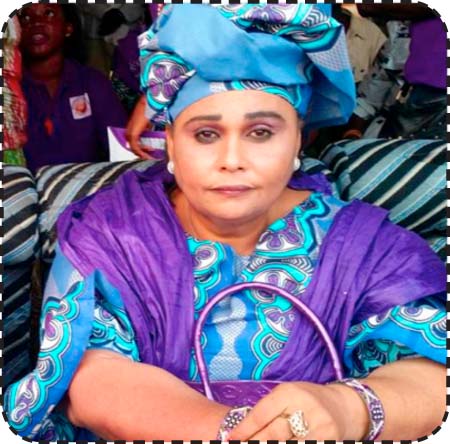
Alieu
Ceesay, a senior bailiff at the Sheriff Division, yesterday continued his
testimony in the case involving Tina Faal before Magistrate Kebba Baldeh of the
Banjul Magistrates’ Court.
When
the case was called, Inspector Sarja Sanyang told the court he was representing
the IGP.
Defence
counsel Sega Gaye said he was representing the accused.
The
witness was asked what his office did after O’ Corporation became the highest
bidder.
In
response, he said a sum of money was paid, but could not remember the amount.
He
was again asked what his office did after payment, and he stated that the money
was paid to the judgment creditor.
Asked
whether announcement was made on the air, he said it was made on the air.
Asked
whether it was true that notice was also disposed for public auction, he
answered in the positive.
Asked
whether if the said notice was shown to him, he would be able to recognize it,
he answered in the positive.
He
was again asked how would he be able to recognize it, and he said the notice
was a photocopy and had stamps on it.
The
said notice was given to him to identity, which he did. He was asked whether he
could get the original copy of the notice, but the defence counsel objected.
Sega
Gaye said he was objecting because the question was a leading question,
suggesting an answer.
He
argued that the testimony of the witness was his examination in-chief, adding
that the witness should be asked an open question, but not one that would
suggest an answer.
He
urged the court to disallow the question.
Inspector
Sanyang said the question was not a leading question, adding that the witness
said the notice was a photocopy, which was why he asked him whether he would be
able to produce the original.
In
his ruling, Magistrate Baldeh told the court that leading questions are not
allowed.
He
asked the prosecutor to rephrase his question.
Prosecutor
Sanyang then asked the witness where the original copy was, and he said it
could not be found.
The
prosecutor applied to tender the notice.
The
defence counsel objected to the application, adding that the document was a
photocopy which made it secondary evidence.
He
argued that the prosecutor did not lay a proper foundation to warrant the court
to grant the application.
The
witness merely stated that they checked but could not find the original, and
did not comply with section 101 (1) of the Evidence Act.
He
further argued that no evidence had been led to show that the witness was the
maker of the document, adding that if the court admitted the document, the
defence would lose the opportunity to ask questions to the maker of the
document.
He
stated that the prosecutor said the document was a certified document, adding
that on the document, one side was stamped and the other side was blank.
He
argued that the witness did not say how the document was printed and when.
He
urged the court to reject the document, because the prosecutor did not lay a
proper foundation.
Prosecutor
Sanyang said section 101 (C) of the Evidence Act was referred to by the defence
counsel, adding that this was why he asked the witness where the original was,
and the witness said they were searching for it, but could not find it.
He
said he had laid a proper foundation to tender the document.
The
presiding magistrate finally admitted the said document, and it was marked as
an exhibit.
At
this juncture, the prosecutor applied for an adjournment, and the defence did
not raise any objection.
The
case was then adjourned for hearing to continue on 23 and 24 November 2016.

